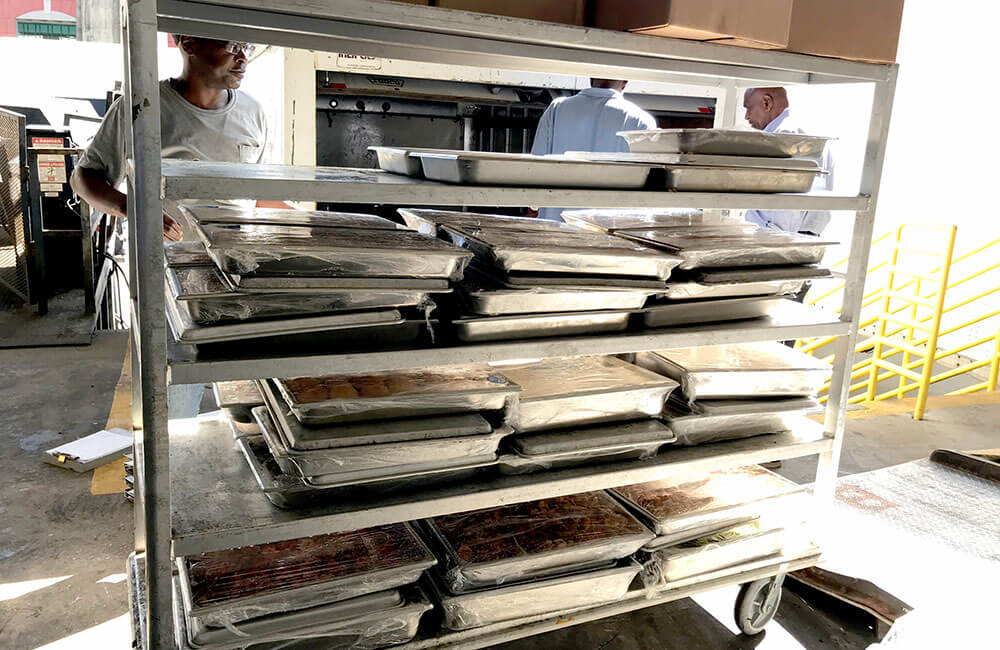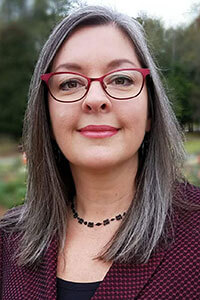
Workers transfer donated food from an Inforum event at New Orleans Convention Center to the recipient, Bethel Colony South Transformation Ministries, a substance abuse program. Finding good partners is an important part of the donation process.
Most convention centers are set up for donating leftover food from events, but often they don’t because they believe they can get sued if someone gets sick from that food. According to sustainability strategist Aurora Dawn Benton, that belief is “predominantly not true.”

Dr. Aurora Dawn Benton
As long as the food is stored properly and donated in good faith to a nonprofit, the Bill Emerson Good Samaritan Food Donation Act of 1996 will protect donors, Benton, founder of Astrapto, said Oct. 9 during the PCMA webinar, “Busting the Myth and Moving the Needle on Food Donations.” Benton, who earned a Ph.D. in business administration, social impact management, founded Astrapto to shed light on environmental and social issues in hospitality, meetings and events, and travel and tourism. She designs and implements sustainability programs, and offered advice on how planners and others can overcome obstacles and “execute brilliantly” on food donations.
While composting programs are a great way to use those event foods, often the leftovers still are in good enough shape to feed to people. The EPA’s Food Recovery Hierarchy puts composting and landfill in the bottom two spots, prioritizing source reduction and feeding hungry people at the top.
Donating fresh food leftovers gives back to the communities hosting events. One in eight people in the U.S. are food insecure, meaning they rely on outside help to get the food they need to live. (Hunger is an extreme form of food insecurity, Benton explained.) Of the 12.3 percent who are food insecure, 20 percent don’t qualify for federal or state programs that would allow them to get food.
While the Good Samaritan Act offers solid protections, Benton said, planners should have their donation partners sign a liability agreement anyway. She also suggested planners add specifics about the donation, the process, and the recipients to their RFPs and services agreements, and recommended they bring it up during site visits, pre-cons, and even tastings.
“Unfortunately, you may have to press and press and press,” Benton said. But hopefully, she added, the venue will then encourage other groups to donate their leftovers.
Forge the Right Partnerships
“Donations take an entire ecosystem working together,” Benton said, so it’s vital that planners and venues find partners who will benefit most from the types of donations they have.
If you’re not familiar with the city where your event will take place, reach out to the venue or caterer, the CVB, or the local state or regional government. These groups also may have a portal on their websites that share local nonprofits taking donations.
Here are a few other options:
- Food banks, like the national Feeding America, which often only take shelf-stable foods
- Emerging tech and logistics solutions, such as Copia, MEANS, and Transfernation
- Student organizations, like Food Recovery Network
Collect Data
Planners can get smarter about planning future events by examining the data from a past event. Data can give you insight into what you may not need to order, or how to change your order. Start simply, Benton said, then expand in complexity. You can start by collecting the date, the time, and the pounds of food left over. More sophisticated groups translate those pounds into meals, which gives them better data points.
Data also gives planners information to help tell the story of their donation’s impact through photos, statistics, and profiles of donation recipients.
“It’s very inspiring to others who worked on the event to know that they had that kind of impact on the community,” Benton said.
- Watch the complete Sustainability: Busting the Myth and Moving the Needle on Food Donations webinar. It was sponsored by Orange County Convention Center.
- Looking for a speaker for your next event? Aurora Dawn Benton is one of our Pass the Mic picks.
